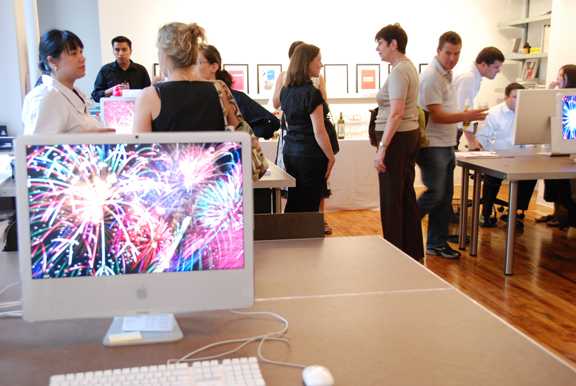Branding since the dotcom burst

Our designer friend Christa Bianchi of Bianchi Design in Williamsburg, Brooklyn recently interviewed Thinkso partner Elizabeth Amorose for a post on her blog.
When you think back to what you were designing in 2003, what trends/changes had real legs since then (in any market sector)?
Let’s see. 2003 was when the Internet — the real Internet — came alive. The “bubble” had burst, and so many people were saying the Internet wasn’t going to be any big thing, that there wasn’t a good way to monetize it. But that clearly wasn’t true and things started to turn around in 2003. Companies were getting serious about their web presence, and started to really invest in it, so our web practice really took off. Today at least 50% of our projects are purely digital and just about every print or branding project has some web component.Content creation was in its early stages back then. (Side rant: I hate that term “content,” because it’s so generic and people throw it around without understanding what it means. A media buyer recently handed us a “strategy” that basically said we needed to put content into ads and tweets of the client campaign we were working on. “Content” is a big category — like “branding” or “advertising.” It isn’t a strategy unto itself. You first have to understand what the target audience wants and what the client is able to give them in order to begin to formulate a content strategy. But I digress.)
Ten years ago, businesses and marketers were starting to realize that the value of the Internet was its vast library-like ability to inform and entertain, and part of monetizing their web activities meant providing this content. Luckily, this is such a natural fit for Thinkso. Our mantra from Day 1 has been to give the content as much thought as we do the strategy and design. We’ve always written (we have full-time writers on staff) nearly every project we work on. I think this is what kept our agency humming along in 2008 and 2009 when so many were suffering.
A more general trend — very closely tied to the interwebs — is the sophistication of projects. Across the board, from consumers to clients, everyone expects more from a brand. Consumers are surrounded by a lot of great design and innovation, delivered to their desktop. (Mind you, they are still subject to a lot of really bad design too, but it creates context for the good design.) This translates into consumer expectations being way higher than they were 10 or even 5 years ago. An organization has to have all of its marketing and design “Ts” crossed and “Is” dotted to impress and retain a “loyal” customer. For us, as a creative agency, this means that the work we do has to be more creative, more sophisticated, and utilize more channels than ever before. Our clients’ needs are great; therefore, we have to deliver more. (The only thing that hasn’t gone up are the budgets. Wah wah.) I remember a time when we were designing sites without even thinking about a CMS. Now our website projects require responsive design using an open-source CMS integrated with social media and with Google Analytics baked in.
Read the full interview here.